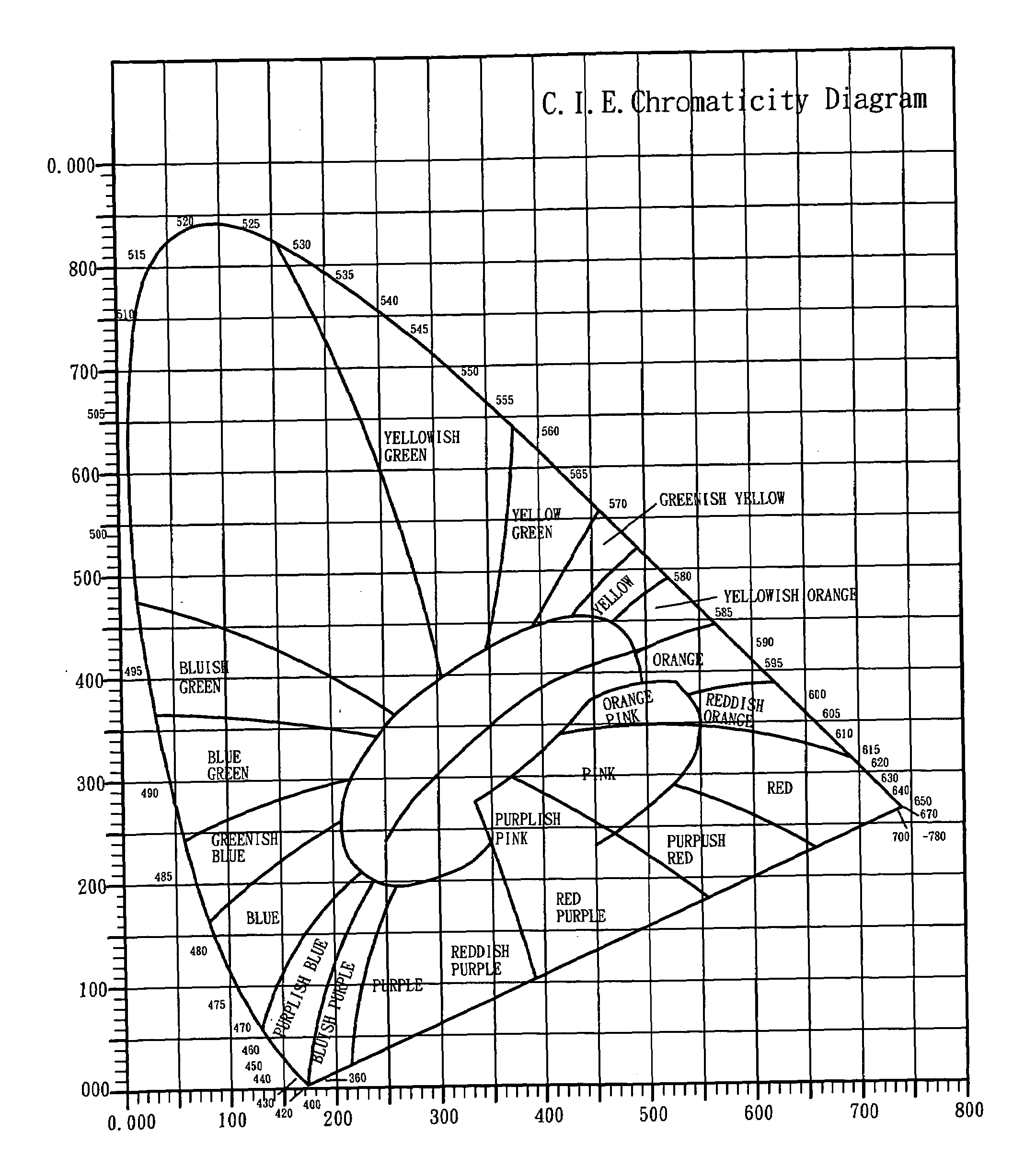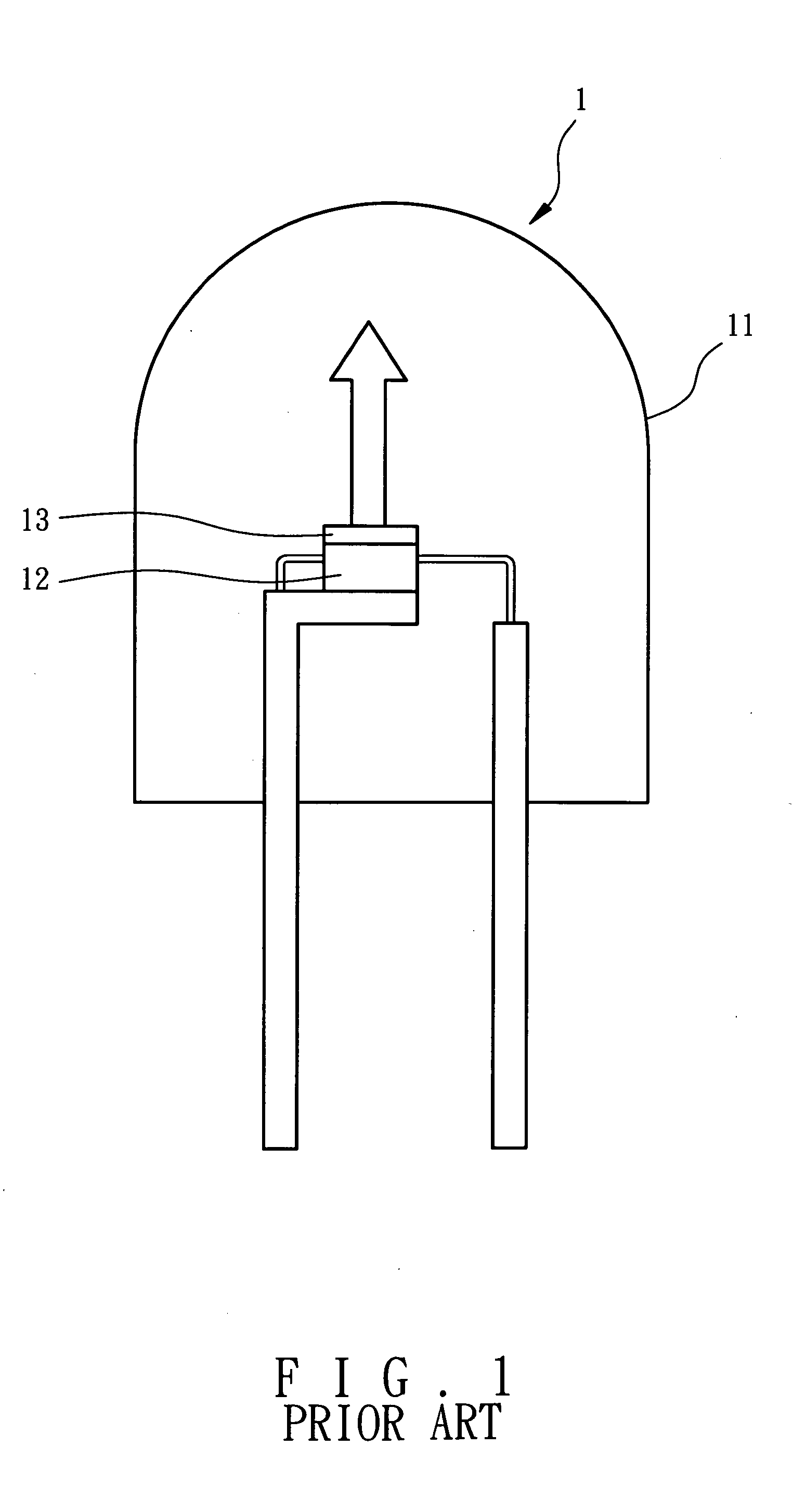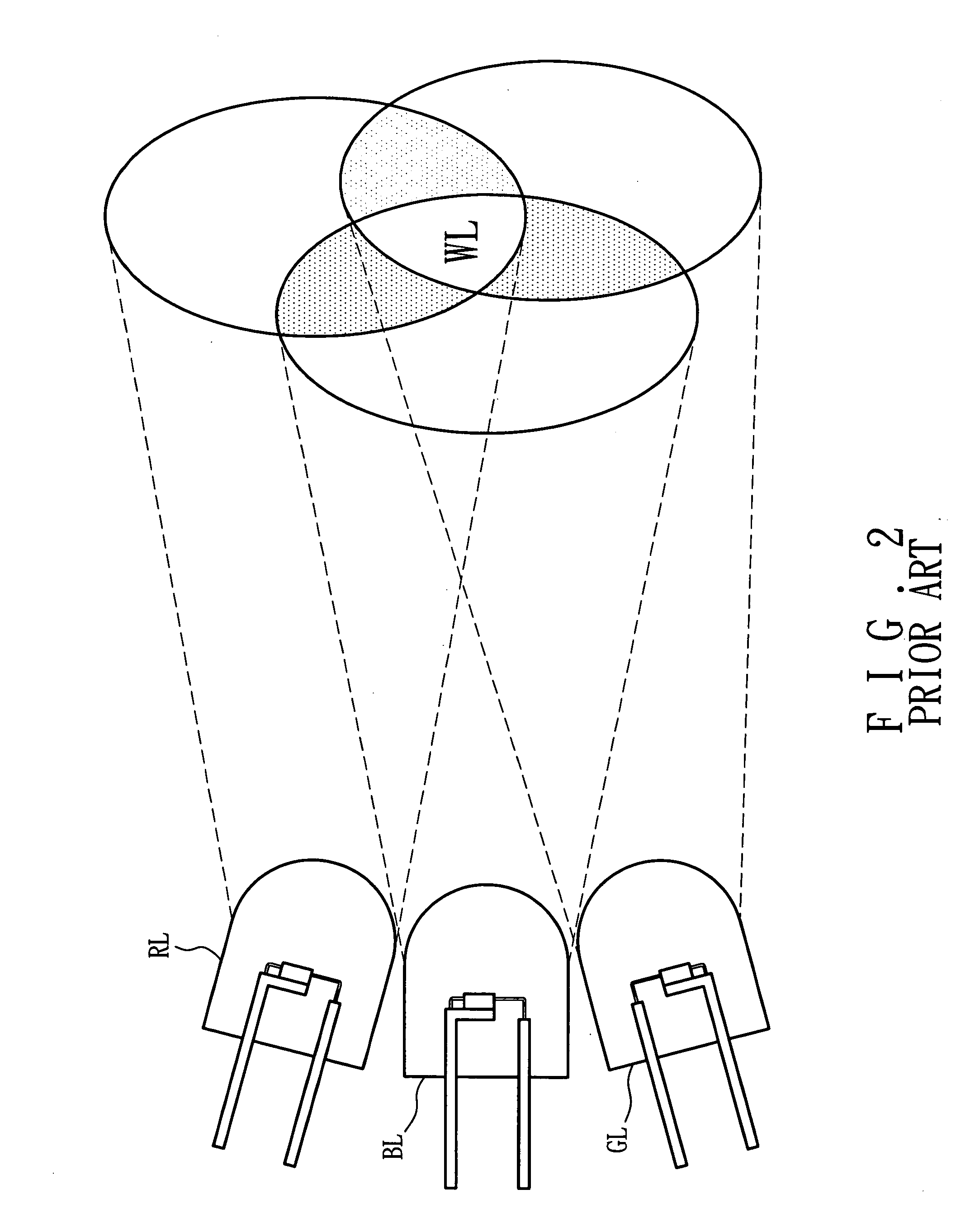Illuminative module for emitting white light via mixing the primary colors with fourth color
a technology of illumination module and white light, which is applied in the direction of lighting support devices, lighting and heating apparatus, light source combinations, etc., can solve the problems of poor saturation and color rendering properties of the white light emitted from the led b>1/b>, decaying intensity of the illumination or luminance of the led b>1/b>, and enhancing the white balance. , the effect of reducing thermal drift and color spots
- Summary
- Abstract
- Description
- Claims
- Application Information
AI Technical Summary
Benefits of technology
Problems solved by technology
Method used
Image
Examples
first embodiment
[0028]Referring to FIG. 5, an illuminative module includes a substrate 3 and an array of light-emitting elements provided on the substrate 3 according to the present invention. The substrate 3 may be a printed circuit board.
[0029]The light-emitting elements may be light-emitting diodes. The light-emitting elements include light-emitting elements 31 for emitting light of a first color, light-emitting elements 32 for emitting light of a second color, light-emitting elements 33 for emitting light of a third color and light-emitting elements 31 for emitting light of a fourth color. The first color is preferably blue, the second color green, and the third color red. Referring to FIG. 7, the fourth color may be yellow with a wavelength of 560 to 610 nanometers or cyan with a wavelength of 470 to 500 nanometers.
[0030]The light-emitting elements 31, 32 and 33 are arranged in any proper order on the substrate 3. Preferably, each of the light-emitting elements 31, 32 and 33 includes a single ...
second embodiment
[0040]Referring to FIG. 6, an illuminative module includes light-emitting elements 31, 32, 33 and 34 according to the present invention. The light-emitting element 31 emits blue light. The light-emitting element 32 emits green light. The light-emitting element 33 emits red light. The light-emitting element 34 emits yellow light.
[0041]Each of the light-emitting elements 31, 32, 33 and 34 is an LED. The illumination angle S1 of the light-emitting element 34 is larger than the illumination angle S2 of the light-emitting elements 31, 32 and 33. Thus, the light spot of the light-emitting element 34 is larger than the light sports of the light-emitting elements 31, 32 and 33. Hence, white light is provided within almost all of the light spot of the light-emitting element 34, thus reducing the number of color spots.
third embodiment
[0042]Referring to FIG. 8, an illuminative module includes light-emitting elements 41 provided on a substrate 4 according to the present invention. Each of the light-emitting elements 41 includes chips 43, 44, 45 and 46 provided on a package substrate 42 for emitting red, green, blue and yellow light, respectively. Non-white light beams radiated from the chips 43, 44, 45 and 46 are mixed with one another to provide what light.
PUM
 Login to View More
Login to View More Abstract
Description
Claims
Application Information
 Login to View More
Login to View More - R&D
- Intellectual Property
- Life Sciences
- Materials
- Tech Scout
- Unparalleled Data Quality
- Higher Quality Content
- 60% Fewer Hallucinations
Browse by: Latest US Patents, China's latest patents, Technical Efficacy Thesaurus, Application Domain, Technology Topic, Popular Technical Reports.
© 2025 PatSnap. All rights reserved.Legal|Privacy policy|Modern Slavery Act Transparency Statement|Sitemap|About US| Contact US: help@patsnap.com



